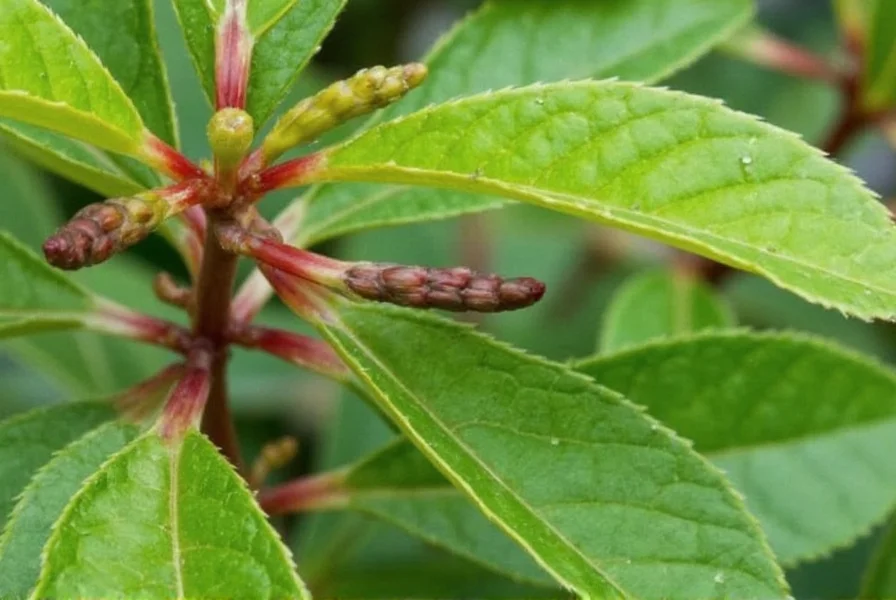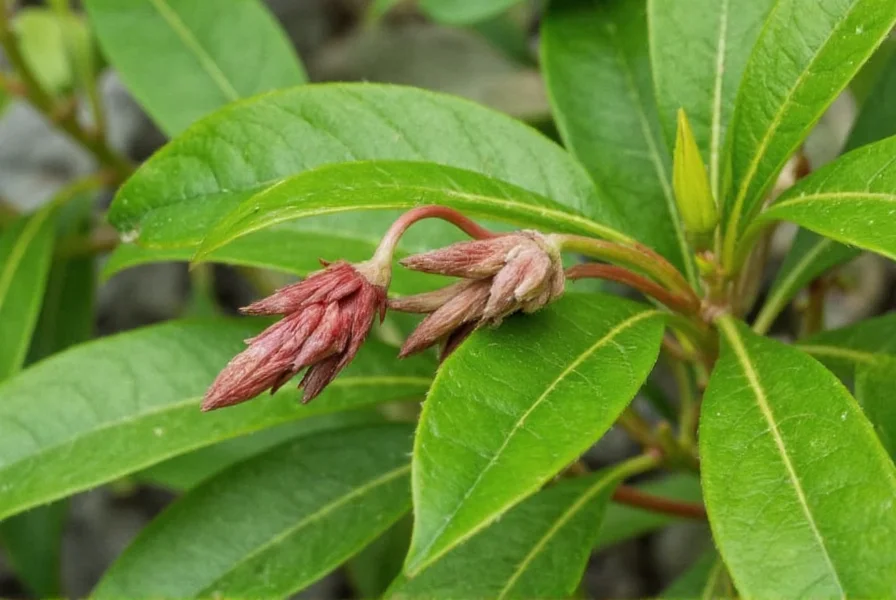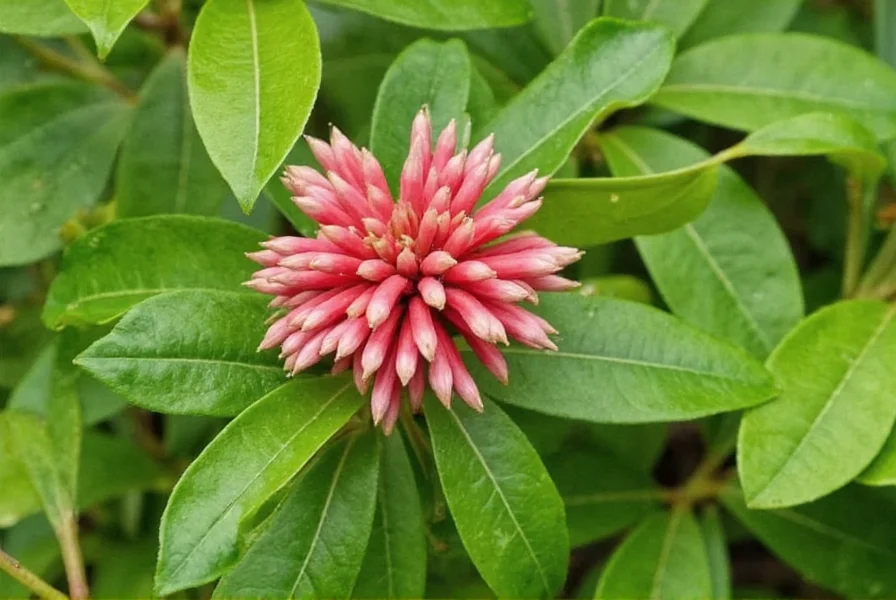Native to woodlands across the southeastern United States, the Carolina allspice plant has earned its place in both natural landscapes and cultivated gardens. This hardy shrub belongs to the Calycanthaceae family and has been cherished for centuries for its unique fragrance and ecological benefits. Unlike many ornamental plants, Carolina allspice offers multi-season interest with its glossy green foliage in summer, distinctive maroon flowers in spring, and interesting seed pods that persist through winter.
Botanical Characteristics of Carolina Allspice
Carolina allspice (Calycanthus floridus) displays several distinctive features that make it easily recognizable. The plant produces 1-2 inch diameter flowers with numerous strap-like petals that range from deep maroon to reddish-brown. These blooms emit a delightful fragrance often described as a blend of strawberries, pineapple, and spice—hence the common name "sweetshrub." The flowering period typically occurs from April through June, depending on local climate conditions.
The leaves of the Carolina allspice plant are oval-shaped, measuring 3-6 inches long, with a smooth margin and a glossy green upper surface. When crushed, the leaves release a spicy aroma similar to the flowers. In autumn, the foliage turns a pleasing yellow before dropping, revealing the plant's interesting branching structure.

Natural Habitat and Ecological Importance
Carolina allspice naturally grows in rich, moist woodlands, often along stream banks and in forest understories from Virginia to Florida and west to Texas. This native plant plays a crucial role in supporting local ecosystems by providing nectar for pollinators and cover for small wildlife. Though the flowers don't attract many bees due to their enclosed structure, they do provide resources for specialized beetles that serve as pollinators.
Gardeners seeking to create wildlife-friendly landscapes will appreciate Carolina allspice's value in supporting biodiversity. The plant's seed pods, which develop after flowering, provide food for birds during the fall and winter months. Additionally, its dense growth habit offers shelter for small animals and beneficial insects throughout the year.
Optimal Growing Conditions for Carolina Allspice
Understanding the native habitat of Carolina allspice reveals its preferred growing conditions. This plant performs best in partial shade, particularly with morning sun and afternoon shade, though it can tolerate full sun in cooler climates with adequate moisture. The ideal soil for Carolina allspice is moist, well-drained, and rich in organic matter with a slightly acidic to neutral pH.
| Growing Factor | Optimal Conditions | Tolerance Range |
|---|---|---|
| Light Requirements | Partial shade (3-6 hours of sun) | Full shade to full sun (with adequate moisture) |
| Soil Type | Moist, well-drained, humus-rich | Tolerates clay and loam soils |
| Soil pH | 5.5-7.0 (slightly acidic to neutral) | 5.0-7.5 |
| Water Needs | Medium to high when establishing | Drought-tolerant once established |
| Hardiness Zones | USDA Zones 5-9 | Zone 4 with protection |
Planting and Care Guidelines
When planting Carolina allspice, select a location that mimics its natural woodland habitat. The best time to plant is in early spring or fall when temperatures are moderate. Dig a hole twice as wide as the root ball but no deeper, ensuring the plant sits at the same soil level as in its container. Backfill with native soil amended with compost for improved drainage and fertility.
During the first growing season, water Carolina allspice regularly to establish a strong root system—about 1 inch of water per week. Once established, this plant demonstrates good drought tolerance but performs best with consistent moisture. Applying a 2-3 inch layer of organic mulch helps maintain soil moisture and temperature while suppressing weeds.
Pruning Carolina allspice should be done sparingly and only after flowering has finished. This plant naturally develops an attractive, multi-stemmed form, so excessive pruning disrupts its natural shape. Remove only dead, damaged, or crossing branches to maintain plant health. For older plants that become overgrown, you can perform renewal pruning by cutting one-third of the oldest stems to the ground each year for three years.
Propagation Techniques for Carolina Allspice
Gardeners can propagate Carolina allspice through several methods. The most reliable technique involves taking semi-hardwood cuttings in late summer. Select 4-6 inch cuttings from current season's growth, remove the lower leaves, dip in rooting hormone, and place in a moist potting mix under high humidity conditions.
Another effective propagation method is through seed collection and stratification. Collect the seed pods when they turn brown in late summer or early fall. The seeds require cold stratification for 90-120 days before they will germinate. Sow the stratified seeds in spring in well-draining soil, keeping them consistently moist until germination occurs.
For those seeking faster results, layering works well with Carolina allspice. Bend a low-growing branch to the ground in spring, wound a section of the stem, cover with soil while keeping the tip exposed, and secure in place. By fall, roots should have formed, allowing you to sever the new plant from the parent.
Common Issues and Solutions
Carolina allspice generally experiences few pest or disease problems, which contributes to its appeal as a low-maintenance native plant. Occasionally, scale insects may appear on the stems, particularly in stressed plants. These can be managed by applying horticultural oil during dormant periods or using insecticidal soap for active infestations.
Leaf spot diseases sometimes occur during extended wet periods but rarely cause significant damage. To prevent these issues, ensure good air circulation around the plant and avoid overhead watering. If necessary, remove and destroy severely affected leaves to prevent disease spread.
One common challenge gardeners face is the plant's tendency to produce root suckers, creating a thicket over time. While this natural spreading habit benefits wildlife, it may require management in formal garden settings. Simply cut suckers at ground level as they appear or install root barriers to contain the plant's spread.

Landscape Applications and Design Ideas
Carolina allspice offers versatile landscape applications thanks to its attractive form and multi-season interest. It works beautifully as an understory plant in woodland gardens, where it complements other native species like ferns, hostas, and native azaleas. The plant's tolerance for partial shade makes it an excellent choice for areas beneath trees where many other flowering shrubs struggle.
Consider planting Carolina allspice near pathways or seating areas where you can fully appreciate its distinctive fragrance. The plant's dense growth habit also makes it effective as a informal hedge or screen. For naturalized areas, allow the plant to spread and form colonies, creating valuable wildlife habitat while requiring minimal maintenance.
When designing with Carolina allspice, pair it with complementary plants that share similar growing requirements. Native ferns, coral bells (Heuchera), and wild ginger (Asarum) create attractive combinations in shaded areas. For sunnier locations, combine with native perennials like coneflowers and black-eyed Susans to create a transition from woodland to meadow.
Carolina Allspice vs. California Allspice
Gardeners sometimes confuse Carolina allspice (Calycanthus floridus) with California allspice (Acanthocalycus spinosus), but these are distinct plants from different genera. Carolina allspice is a deciduous shrub native to eastern North America with maroon flowers, while California allspice is an evergreen shrub native to California with white to pale pink flowers.
The fragrance also differs between these plants. Carolina allspice emits a spicy, fruity aroma reminiscent of strawberries and pineapple, whereas California allspice has a more subtle, spicy fragrance. Understanding these differences helps gardeners select the appropriate plant for their region and design goals.
Historical and Cultural Significance
Native American tribes historically used Carolina allspice for various medicinal purposes, including treating headaches and as an antiseptic. Early European settlers adopted some of these uses and also discovered that the aromatic bark could serve as a substitute for cinnamon, hence one of its common names, "bubby bush."
Today, while not commonly used medicinally, Carolina allspice remains valued for its ornamental qualities and ecological benefits. Modern research has identified compounds in the plant with potential pharmaceutical applications, though these are not yet commercially developed. The plant's enduring popularity in native plant gardens reflects growing appreciation for sustainable landscaping with regionally appropriate species.
Frequently Asked Questions
How fast does Carolina allspice grow?
Carolina allspice grows at a moderate pace, typically adding 12-24 inches per year under optimal conditions. It reaches maturity at 6-12 feet tall and 6-10 feet wide within 5-10 years. Growth rate slows as the plant matures, and it develops a dense, multi-stemmed form that requires minimal maintenance once established.
Does Carolina allspice attract pollinators?
Yes, Carolina allspice attracts specialized pollinators, primarily beetles that are adapted to pollinate its unique flowers. While it doesn't attract many bees due to the enclosed structure of its blooms, the plant provides valuable nectar resources for these specialized insects. The seed pods that develop after flowering also provide food for birds during fall and winter months.
Can Carolina allspice grow in full sun?
Carolina allspice can grow in full sun but performs best with partial shade, particularly in hotter climates. In full sun locations, it requires consistently moist soil to prevent leaf scorch and stress. Gardeners in northern regions (zones 5-6) can successfully grow Carolina allspice in full sun with adequate watering, while those in southern regions (zones 7-9) should provide afternoon shade for optimal growth.
Is Carolina allspice deer resistant?
Yes, Carolina allspice is generally considered deer resistant due to the aromatic compounds in its leaves and flowers. While no plant is completely deer-proof, Carolina allspice experiences significantly less browsing than many other ornamental shrubs. This makes it an excellent choice for landscapes in areas with deer pressure, particularly when combined with other deer-resistant native plants.











 浙公网安备
33010002000092号
浙公网安备
33010002000092号 浙B2-20120091-4
浙B2-20120091-4